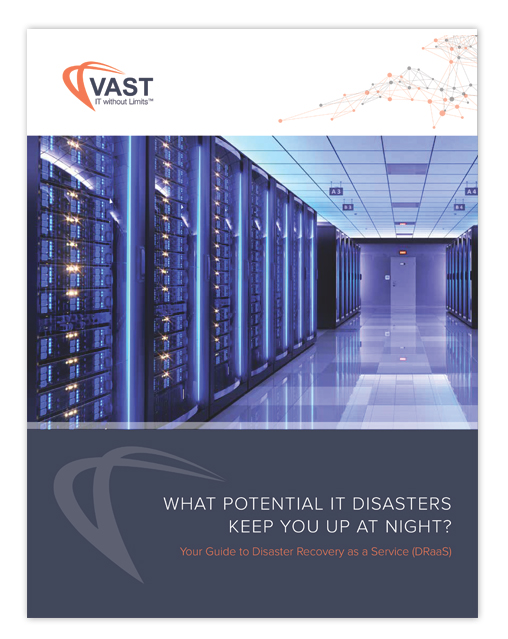Organizations must protect their IT environments from multiple risks. External threat actors are continually developing new and innovative methods for launching cyberattacks, thereby endangering data resources and mission-critical systems. Companies may also be affected by other types of unintentional data loss that negatively impact business operations.
Today’s complex and evolving threat landscape demands a new approach to cybersecurity. Traditional methods, which focus on hardened defenses around the IT environment, are no longer sufficient to address the risks posed by cyberattacks and data loss. Organizations must adopt a comprehensive cyber resilience strategy to protect their data and infrastructure.
What is Cyber Resilience?
The NIST defines cyber resiliency as “the ability to anticipate, withstand, recover from, and adapt to adverse conditions, stresses, attacks, or compromises on systems that use or are enabled by cyber resources. Cyber resiliency is intended to enable mission or business objectives that depend on cyber resources to be achieved in a contested cyber environment.”
Cyber resilience encompasses various measures that modern organizations employ to safeguard their digital assets.
- Cybersecurity – Companies must continue to deploy firewalls, intrusion detection software, and other measures to defend against and prevent cyberattacks.
- Business continuity – Decision-makers must develop and implement business continuity plans to maintain operations and protect the company from detrimental cyber events.
- Incident response – Organizations must develop plans that enable them to quickly and effectively respond to threats and data loss.
- Disaster recovery – Companies must have reliable disaster recovery plans in place to restore systems after a failure, breach, or cyberattack.
Cyber resilience is designed to prevent attacks, minimize damage, and quickly restore operations.
What are the Key Elements of a Cyber Resilience Strategy?
An effective cyber resilience strategy requires a broad-ranging approach that includes the following key elements.
Risk Management
Organizations must perform risk management to identify and assess cyber risks that may impact their business. This process should include inventorying and prioritizing IT assets based on their sensitivity or critical role in business operations. Teams can then develop mitigation strategies aligned with business objectives.
Cybersecurity and defensive measures
Businesses require robust controls to defend against cyberattacks and prevent threat actors from accessing their infrastructure. Traditional cybersecurity tools, such as firewalls and antivirus software, form the first line of defense. Organizations can limit unauthorized access to resources through initiatives such as multi-factor authentication (MFA) and the principle of least privilege. Administrators should ensure that systems are continually updated and install security patches to address known vulnerabilities.
Monitoring and incident detection
Companies must implement automated monitoring and incident detection solutions to identify and address abnormal or suspicious activity. Teams can employ advanced threat intelligence tools to quickly recognize potential issues and address them before they can cause damage.
Cyber Incident Response Plan
Organizations must develop a cyber incident response plan that clearly outlines the roles and responsibilities of employees in the event of a breach. Teams should conduct regular tests to ensure their readiness and enhance response activities.
Business Continuity and Disaster Recovery
Companies should develop and maintain a business continuity plan to protect operations during an incident or disruption. A disaster recovery plan is a vital component of business continuity, enabling the quick restoration of systems and data resources. Data should be backed up regularly and stored securely in the cloud or an off-site facility.
Regulatory compliance
Business leaders must include provisions to ensure compliance with data security and privacy regulations, such as HIPAA or GDPR. Teams may need to take additional actions to protect and make regulated data available after a cyber incident. The failure to meet compliance standards can result in substantial financial and reputational penalties.
A cyber-resilient culture
Everyone in the organization must understand their role in protecting the IT environment. Upper management should prioritize cyber resilience planning and integrate it into all aspects of business strategy. Decision-makers should provide employees with education on cyber hygiene and threat identification to enhance their awareness and preparedness for potential cyber threats.
Review and improvement
Companies should regularly review and update their cyber resilience strategies to address changes in the environment and evolving threats. Teams should learn from past incidents and refine their plans to achieve a more effective response.
Managing third-party risk
Organizations must consider the security posture of partners and vendors involved in supporting the IT environment. Third-party access to the infrastructure should be monitored and closely controlled. Companies should seek SLAs with vendors and providers that align with their cyber resilience stance.
Why is Cyber Resilience Essential for Your Business?
Cyber resilience has become a vital component of a comprehensive IT management strategy. It is virtually inevitable that most businesses will be affected by a cyber incident. Companies cannot rely solely on traditional cybersecurity measures to protect themselves from the diverse and increasingly dangerous threats to their computing resources. Cyber resilience is crucial for these key reasons:
- Protecting business continuity and maintaining operations to serve employees and customers;
- Reducing financial losses by quickly restoring services and systems;
- Maintaining regulatory compliance with data accessibility standards;
- Enhancing reputation and customer trust;
- Preparing and adapting to evolving threats.
How Does VAST Support Your Cyber Resilience?
VAST’s data protection and cybersecurity experts have witnessed the evolution of cyber threats and the damage they can cause to your business. We understand the complexity of devising and executing the many components of cyber resilience. Our services can help minimize these complexities and support a cyber resilience strategy that safeguards your business.
- Disaster Recovery-as-a-Service (DRaaS) – VAST’s DRaaS offering leverages the power and flexibility of AWS Elastic Disaster Recovery for enhanced resilience. The service protects on-premises and cloud environments with the ability to recover in alternate geographic regions to address large-scale disasters.
- Cloud Backup-as-a-Service (CBaaS) – Our CBaaS service provides a fully managed backup solution tailored to your environment, built on Druva’s advanced data protection technology. The solution is capable of protecting your on-premises and cloud data.
- Cloud Access Security – We support the Bitglass Cloud Access Security Broker (CASB) to protect your data in the cloud and throughout your IT environment. You will always know where your data is stored and have control over who has access to it.
Get in touch with us and let VAST help you put together a cyber resilience plan that keeps your business safe.



